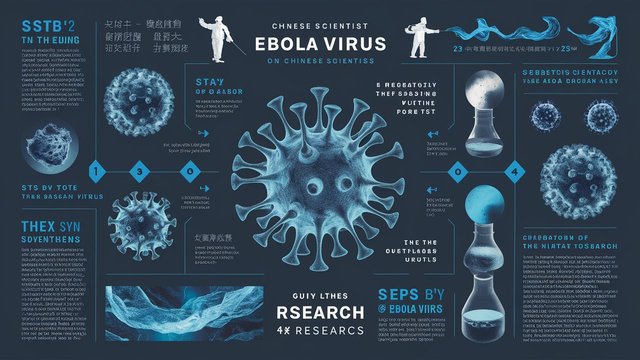Chinese researchers at Hebei Medical University created a fatal virus using an Ebola glycoprotein in a ground-breaking but contentious study that killed a bunch of hamsters. Significant new information about the pathophysiology of Ebola has been made available by this research, which has also spurred international debate on the morality and security of similar experiments.

The researchers created an experiment and mimicked the symptoms of Ebola in a controlled laboratory setting in an effort to better understand the disease. The scientists created a new virus that killed almost all of the study's hamsters by using a glycoprotein from the Ebola virus.
After being exposed to the modified virus, the hamsters "developed severe systemic diseases similar to those observed in human Ebola patients," according to the research published in ScienceDirect.
Everything you should know about the recent research:
• The three-week-old hamsters, which included both male and female specimens, had scabs form over their eyeballs, impairing their vision, according to the study. This specific symptom is similar to one of the more severe human Ebola manifestations. The hamsters' bodies showed widespread viral spread, with the liver exhibiting the highest viral loads, according to the researchers. The heart, brain, kidneys, spleen, lungs, stomach, and intestines were among the organs impacted.
• In general, this surrogate model serves as a cost-effective, safe, and quick way to assess medical countermeasures against the Ebola virus (EBOV) in BSL-2 settings. This would speed up scientific progress and breakthroughs in the fight against the Ebola virus," the study said.
• Because the Ebola glycoprotein was carried by the vesicular stomatitis virus (VSV), rather than the more stringent Biosafety Level 4 (BSL-4) normally needed for Ebola research, the researchers were able to conduct their work in a Biosafety Level 2 (BSL-2) facility. This strategy preserved safety procedures while making the study more feasible and accessible.
• This study has important ramifications for both public health and scientific research. Scientists can better study the disease and create countermeasures by modeling the effects of Ebola. The researchers continued, "It's a sign that 3-week-old Syrian hamsters infected with VSV-EBOV/GP may be useful in the study of optic nerve disorders caused by EVD."
• Ebola is an uncommon but deadly human disease that frequently results in death. The World Health Organization (WHO) states that close contact with the blood, secretions, organs, or other body fluids of infected animals—such as fruit bats, chimpanzees, gorillas, monkeys, forest antelope, or porcupines found sick or dead in the rainforest—introduces the virus into the human population.
• Two simultaneous outbreaks of Ebola occurred in 1976, one in Yambuku, Democratic Republic of the Congo, and the other in what is now Nzara, South Sudan. The WHO reports that the latter incident took place in a village close to the Ebola River, which is where the disease gets its name. The organization maintains surveillance for the Ebola virus disease and assists at-risk nations in creating plans for readiness in order to work with nations to stop Ebola outbreaks.
• The Hebei Medical University study represents a major breakthrough in Ebola research by offering a model for quick preclinical testing of medical countermeasures. This may result in novel therapies and prophylactic actions against Ebola, a virus that has spawned deadly epidemics with high fatality rates.
• Still, there are safety and ethical issues with this research. Even in a carefully monitored laboratory setting, the development of a mutant virus needs close supervision to avoid unintentional release or misuse.